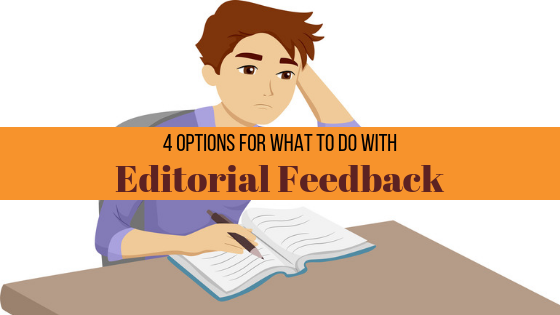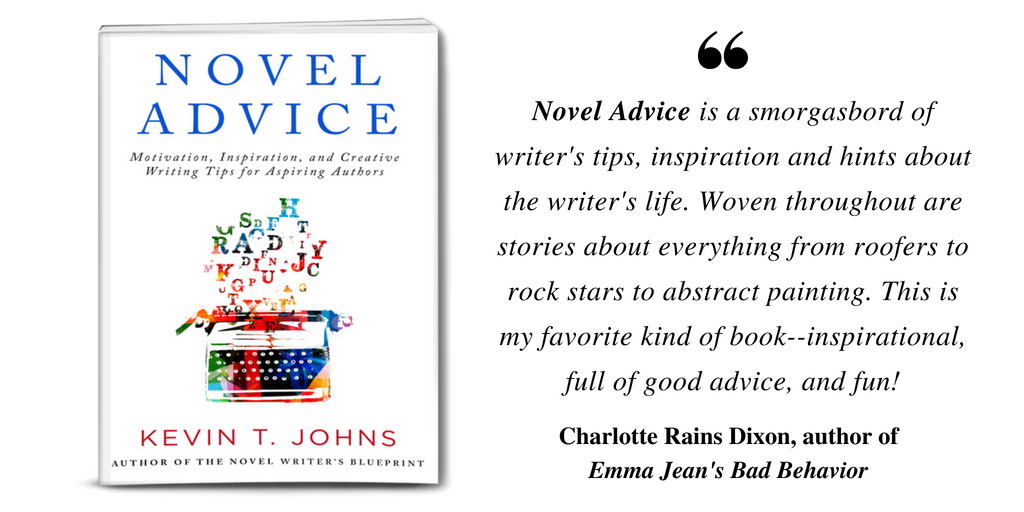At some point during the book development process, you’re going to receive editorial feedback.
Whether it’s feedback from an agent, editor, critique partner, or writing coach, someone with experience and/or perspective is going to provide you with advice about how to improve your work.
What you choose to do with that advice is up to you.
Here are four options for how to proceed:
1. Make the Recommended Changes Immediately
If you agree with the recommended edits/revisions and aren’t concerned that implementing them right away will otherwise throw off your progress or momentum, go ahead and make the changes immediately.
Having just received the feedback, the edits will be fresh in your mind.
If you are working with a coach, you may have even just spent a portion of your last coaching session discussing the changes and why they are necessary.
So get in there and make those changes – strike while the iron is hot!
2. Ignore the Recommended Changes
At the end of the day, this is your book.
Unless you have signed a contract with an agent or publisher, what you do with your work-in-progress manuscript is 100% under your control.
If you don’t agree with the recommended changes, there is a simple solution: ignore them.
This isn’t your editor’s book or your writing coach’s book. This is your book. It’s up to you to make the decisions about what is going to be best for the book in the long run.
Ignoring advice provided by experienced professionals is likely not the quickest path to writing and publishing success, but you’re an adult. You get to make the choices about how your story is told.
If you want to ignore the advice provided to you, it’s your prerogative to do so.
3. Apply the Lessons Learned as You Continue to Draft
When I provide comments to my writing clients on pages they have submitted to me, the comments are often general in nature.
There are many common areas where writers struggle; challenges with pacing (i.e. showing vs. telling), point-of-view, and scene and story structure run rampant in first drafts.
As such, when I provide comments to clients on these issues, it’s rarely in the hopes that they will stop everything and revise immediately.
Instead, my hope is that having drawn these issues to the author’s attention, they will be more conscious of them moving forward as they continue to draft. The specific chapter that stimulated the comments or advice can always be returned to at a later date.
Speaking of which…
4. File Away the Recommended Changes to Return to During Revisions
Good advice rarely goes stale.
Insightful notes, or helpful advice regarding how to improve a scene, will be just as helpful and insightful during revisions as they are in the drafting.
Far too often writers get bogged down during the creation of their first draft. In fact, I would say spending too much time on a first draft is the number one mistake I see aspiring authors make.
The magic happens in the revisions, my friends.
The first draft is about getting the story out of your head and onto the page. It’s about developing good writing habits and figuring out what works best for you as a writer. It is not about perfect pages.
You’ll want to head into the revisions process with a nice ‘to do list’ identifying things that need to be altered, revised, deleted, or amplified. As such, file away the advice you have received and then revisit it when the time is right.
How NOT to Respond to Editorial Feedback
With those four options identified, let’s now cover how not to proceed after receiving editorial feedback.
Don’t get offended.
Don’t get defensive.
Don’t fall into a pit of despair and give up on your book.
You’ve either hired someone to provide you with their professional advice, or someone has been kind enough to read your work and provide feedback free of charge. Either way, the feedback you have received has been provided in the spirit of making your writing better.
With that in mind, you’ll want to accept the feedback with graciousness and humility, choose one of the four options identified in this article, and then run with it.
—
Enjoy this article? If so, you’ll love my book Novel Advice: Motivation, Inspiration, and Creative Writing Tips for Aspiring Authors. Grab a FREE copy by clicking the image below:


